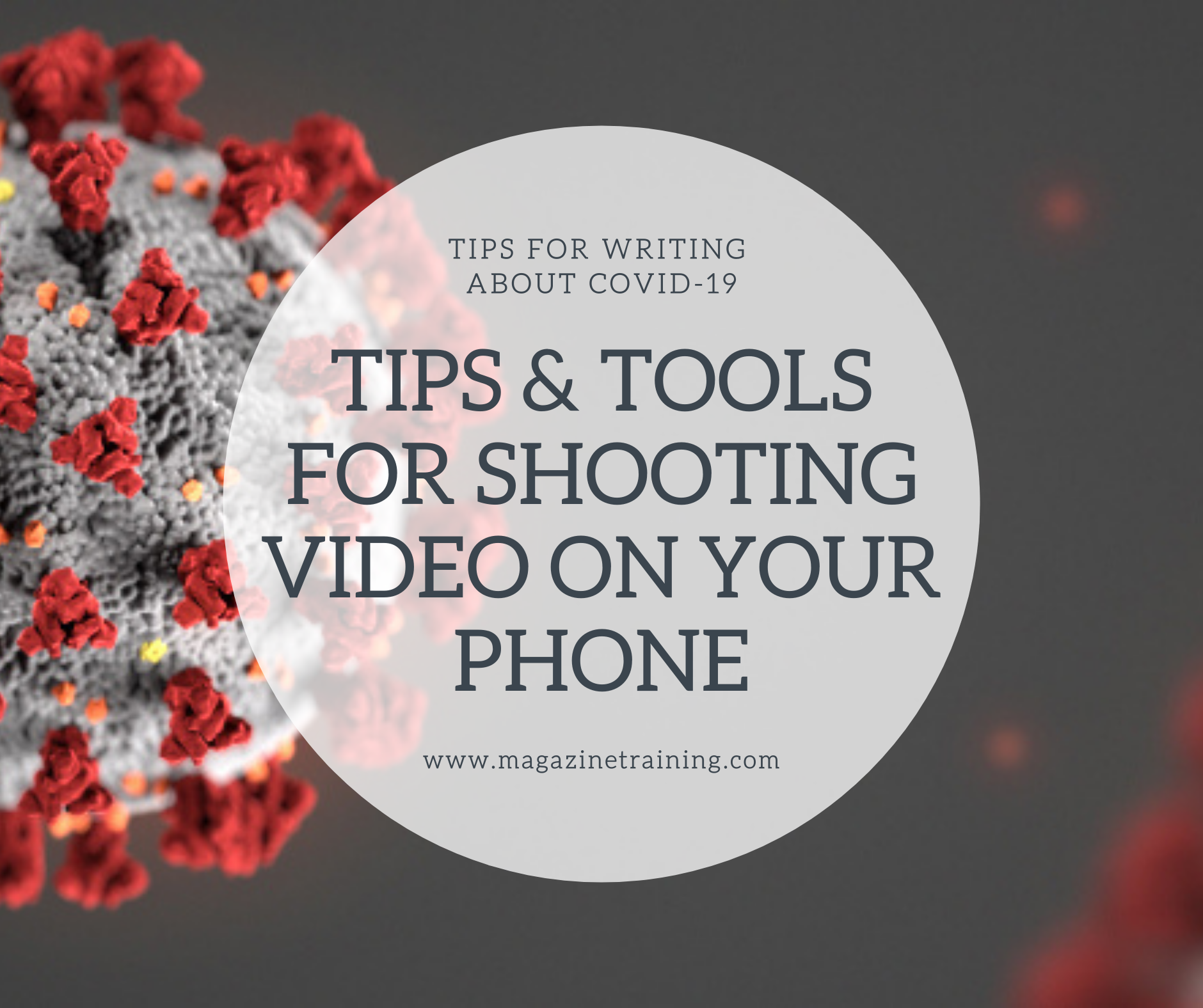
This article is the second in a 4-part series based on training materials produced during the APAC video accelerator.
If you have a smartphone, chances are you have a professional quality video camera at your disposal. Knowing when and how to use it is important.
This tip sheet covers the apps and accessories you will need, and outlines the best practices when it comes to shooting video on your phone, whether you are shooting yourself or asking sources to shoot for you.
How to turn your phone into a professional video camera (for $100)
There are endless ways to improve the quality of your phone footage — and an endless amount of money you could spend on gear. Professional lenses, lights and microphones can improve the quality of smartphone footage dramatically. There are also a number of products designed specifically for your phone.
If you are on a budget, here are three items I would recommend acquiring:
1) An app that gives you greater control over things like f-stop, focus, color and frame rate
2) A tripod or “gorillapod”
There are a number of ways a tripod can be used to give you more stability when shooting on your phone.
- My Pick: Joby Griptight Action Kit or Gorillapod Starter Kit
3) A wired lavalier
In many ways, sound quality trumps video quality. People are far more likely to tolerate poor video quality than poor sound quality. If you are interviewing anyone for your video, a wired lavalier is essential.
- My Pick: Audio-Technica Omnidirectional Condense Lavalier Microphone for Smartphones
- For slightly higher budgets: Rode smartLav+
How to work with sources to capture phone footage
In a pandemic, we are relying on phone footage and sources more than ever. We have seen a number of ways that newsrooms are being resourceful in order to gain access to hard-to-reach people and places.
What can sources shoot?
- B-roll
- Example: Quartz asks athletes to film their training regiments at home.
- Show and Tell
- Example: CNA asks a foreign worker to walk us through his dormitory under lockdown.
- Example: LA Times photojournalist films his experience getting tested for Covid-19
- Testimonials
- Examples: Vice News Tonight and The Washington Post have doctors give testimonials as they work on the frontlines of fighting the virus. You can see how powerful this can be.
Best Practices
- Be as specific as you can about the shots you want. For example, don’t just say “shoot horizontally.” Explain what that means, and send a screenshot of examples if needed.
- Be clear on your sources’ time commitment. From the outset, you need to explain exactly what you will need (give a shot list) and how much of their time this will take. This includes more than just shooting video — consider the time it takes to conduct an interview and send the video, for instance.
- Build in a review process, if possible. If you can, give yourself an opportunity to see some footage and provide guidance for another round of shooting.
- Simpler is often better. While the apps and additional gear I recommended will work for you, I would advise against sending to sources who don’t have video experience.
by Jacob Templin, International Journalists’ Network
Related posts
Magazine Training International’s mission is to encourage, strengthen, and provide training and resources to Christian magazine publishers as they seek to build the church and reach their societies for Christ.

